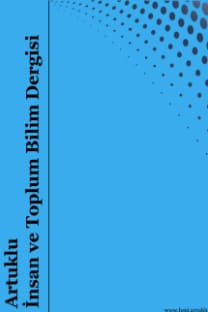Chaucer’ın Lirik Sanatı: Troilus ve Criseyde’de Şarkılar ve Mektuplar
Lirik sanat, şarkılar, mektuplar, yeni tarihselcilik, insan doğası
The Lyric Art of Chaucer: Songs and Letters in Troilus and Criseyde
Lyric art, songs, letters, new historicism, human nature,
___
- Ashley, T. (2009). Edinburgh Festival: Dangerous Liaisons. Access: 01.07.2019: https://www.theguardian.com/culture/2009/aug/22/troilus-cressida-play-interpretations
- Boccaccio, G. (1999). Filostrato (N.Griffin and A.Myrick, Trans.). Cambridge: In Parantheses Publications.
- Bressler, C.E. (2007). Literary Criticism: An Introduction to Theory and Practice. New Jersey: Pearson Prentice Hall.
- Brewer, D. (1998). A New Introduction to Chaucer. London: Longman.
- Chaucer, G. (1971). Troilus and Criseyde. Middlesex: Penguin Books.
- Coghill, N. (1971). Introduction. G. Chaucer (Aut.). Troilus and Criseyde (p.xi-xxvi). Middlesex: Penguin Books.
- Donaldson, E. T. (1991). Troilus and Criseide. C. D. Benson (Ed.). Critical Essays on Chaucer’s “Troilus and Criseyde” and his major early poems (p.44-56). Buckingham: Open University Press.
- Frantzen, A.J. (1993). Troilus and Criseyde - the poem and the frame. New York: Twayne Publishers.
- Gao, J. (2019). A New Historicism Study of Shakespeare’s Historical Plays. Advances in Social Science, Education and Humanities Research, 310, 191-196.
- Greenblatt, S. (Ed.). (2006). The Norton Anthology of English Literature (8th Edition, Volume II). London, New York: W.W. Norton & Company.
- Henryson, R. (1925). The Testament of Cresseid. Edinburgh: The Porpoise Press.
- Hickling, M. (2018). New Historicism. Brock Education Journal, 27 (2), 53-57.
- Hinson, M. (Ed.). (1902). Anthology of Romantic Piano Music. Venice: Alfred Publishing.
- Hussey, S.S. (1985). Chaucer – An Introduction. London: Methuen.
- McKinnell, J. (1991). Letters as a Type of the Formal Level in Troilus and Criseyde. M. Salu (Ed.). Essays on Troilus and Criseyde (p. 73-89). Cambridge: D.S.Brewer.
- Olson, C.C. (1941). Chaucer and the Music of the Fourteenth Century. Speculum, 16(1), p. 64-91.
- Saunders, C. (Ed.). (2001). Chaucer. Oxford: Blackwell Publishers Ltd.
- Shakespeare, W. (1901). Troilus and Crisseda. New York: The University Society.
- Szarmach, P.E., Tavormina, M.T. and Rosenthal, J.T. (Ed.). (1998). Medieval England: An Encyclopedia. New York: Routledge.
- Turhan, V. (1949). Chaucer – Devri, Hayatı, Eserleri ve Canterbury Masalları’ndan Seçme Tercümeler. İstanbul : Üçler Basımevi.
- Windeatt, B. (1992). Oxford Guides to Chaucer – Troilus and Criseyde. Oxford: Clarendon Press.
- Yayın Aralığı: Yılda 2 Sayı
- Başlangıç: 2016
- Yayıncı: Mardin Artuklu Üniversitesi
Bangladeş Dakka Metropolündeki Gündelik İşçilerin Geçim Stratejisi Olarak Sosyal Ağ
Devecilik Kültürü ve Deve Güreşleri Üzerine Antropolojik Bir Analiz
Balkan Şairi Muhammed Hulusî Usturumcavî ve Divançesi
Kemal Paşa-zâde’nin Şiirlerinin Aruz, Kafiye ve Üslup Hususiyetleri
Boncuklu Tarla Çanak-Çömleksiz Neolitik Dönem’e Tarihlenen Bir Grup Figürlü Kemik Plak
Literary Influence of Hâfız Upon Emirî
Eleştirel Bir Yaklaşımla Medeniyet ve İktisat
Manastırlı Rızâ Nûrî’nin Tahmîsât-ı Nevbahârım Adlı Eseri
